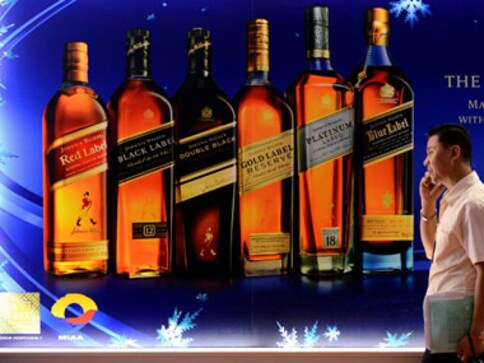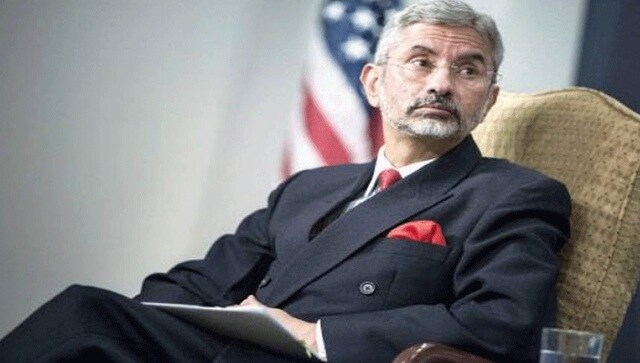Why liquor industry in India is desperately seeing incentives
The alcohol industry bears the maximum brunt of political and economic ramifications.

Representational image
India is the world’s ninth-largest consumer of all alcohol and remains one of the fastest growing markets in the world. India consumes more than 663 million litres of alcohol, up 11 percent from 2017. And yet bureaucratic red tape together with obtuse and archaic policies and taxes govern the sector.
The recent price war between the territories of Delhi and Gurugram is a case in point on how urgently the sector needs streamlining.
Read more: Raging liquor war in Delhi-NCR: Consumer is the king, but for how long?
India is notorious for the kind of taxes and policy implementation that follows the liquor industry in the country, with brands in the segment continuously looking at alternatives for better ease of doing business in the country.
In India, alcohol does not fall under the purview of the Goods and Services Tax (GST) and so the revenue from it goes directly to the state government. The old taxes and fees continue to apply to liquor, which includes:
1. Excise duty on production of alcoholic liquor for human consumption
2. State Value Added Tax (VAT) on its sale
3. Fee such as gallonage fee, and license fee
So, if there is a budget deficit, the government tries to get more money from the industry. And, if for political reasons it is so required, sale of alcohol is either banned or restricted.
Each of the 28 states of India lists down its own set of rules regarding taxing liquor. For instance, in Gujarat, liquor is prohibited, whereas, in states like Kerala and Tamil Nadu various restrictions have been imposed on alcohol consumption.
Uttar Pradesh collected the highest revenue from the excise tax on liquor, totalling Rs 31,517 crore in 2019-20. However, even Puducherry earns its primary income from alcohol trading, while Goa has the least alcohol tax rates.
Seventy percent of what consumers pay goes to the state government and while that will not change, the industry needs to be more incentivised to launch better and newer options for the interest of the consumer, say experts.
The biggest hurdle here is the cost of bringing a product to the market is much higher than creating a product. The administrative processes create bottlenecks of their own.
While the country gets huge revenue from the sale of alcoholic beverages, every state has a different parameter of taxation and regulation when it comes to this category. Around 21 states had increased excise duties, maximum retail price (MRP), bottling fees, and imposed Covid-19 specific fees, cess and surcharges to avoid revenue shortfall and meet consumer health needs.
In states such as Assam, Rajasthan, Karnataka and Uttar Pradesh, changes were brought in through hike in excise duty slabs; while in states such as Delhi, Haryana, Odisha and Telangana, specific Covid-19 related cess/fees were implemented. The impact on final prices of the products ranged between 5-25 per cent; except in Delhi, where prices increased by 70 per cent initially due to imposing of a special corona fee of the same percentage.
With such uncertainties, the liquor industry also faces low interest from potential investors.
While the hindrances are many, alcoholic beverages companies have found their way in the domestic market with many home-grown brands making a space for themselves in the segment.
Also, the power of digital media is further helping the segment grow in ways more than one. Unlike earlier, liquor brands are now able to advertise their products through digital medium, social media channels. Music festivals, events are an added spin-off.
Online delivery is another experimental area for liquor brands in India today wherein many states have allowed ‘online delivery’ of alcoholic beverages, they are yet to allow ‘online selling’ of these drinks, going forward.
Liquor industry leaders also cite other measures that could help Indian consumers become a more aware and conscious drinking population than it is now. India has a large burden from alcohol use disorder.
According to a report by the Ministry of Social Justice and Empowerment (MoSJE) of India, every third alcohol user in India needs help for alcohol use problems and only about 1 in 38 people with alcohol dependence report getting any treatment or help.
Where alcohol consumption is concerned, Kerala is the leader among all other Indian states on this aspect. A survey revealed that approximately 18.7 percent of men in rural areas and 21 per cent of men in cities consume alcohol in the state.
If the national average of alcohol users above 15 years among men is 18.8 percent, it is 19.9 per cent in Kerala. Alcohol consumption in the Alappuzha district is slightly more compared to the other 13 districts of the state.
Meanwhile, in what set the highest-ever earning in a month, the excise department raked in over Rs 3,000 crore from liquor sales in December last year. Shopkeepers raised stocks worth Rs 3,040 crore from depots, with the sales figure also being higher than December 2020 of Rs 2,765 crore.
Telangana has been going head-to-head against Tamil Nadu, which was among the highest revenue-generating states from liquor sales.
In the previous financial year, the government of Tamil Nadu had earned nearly Rs 38,000 crore revenue, and Telangana raked in Rs 40,000 crore. Over the past two years, Telangana has earned Rs 54,000 crore through liquor sales, and in the coming year, it is set to break Rs 40,000 crore in just a single financial year.
When it comes to West Bengal, the state witnessed the highest ever revenue from booze in a month in December on the back of a drop in prices in December 2021. It touched nearly the Rs 2,000-crore mark, which is almost 25 per cent more than the pre-Covid level. The sale of bottled in origin (BIO) and also overseas spirit bottled in India (OSBI) shot up nearly four times in December.
A total of nearly 2,076 new liquor shops received their licence in the past four years, as Uttar Pradesh saw a 74 per cent increase in revenue through liquor, an RTI had revealed back in July 2021. A substantial part of this revenue — approximately 10 percent — for the state comes from excise duty on booze. During the 2020-21 financial year, the Yogi Government earned Rs 30,061 crore from licence fee and excise duty from the liquor shops.
The ad hoc decisions by the state governments make it difficult for new entrants to set up shop. What is crystal clear is the alcohol industry bears the maximum brunt of political and economic ramifications. And the biggest dichotomy is most states look towards the alcohol industry to rake in the revenue.
This is Part 2 of a two-part series.
The author is CEO of nnis. Views expressed are personal.
Read all the Latest News, Trending News, Cricket News, Bollywood News, India News and Entertainment News here. Follow us on Facebook, Twitter and Instagram.
also read

As Sri Lanka reels under economic crisis, a look at the country's ruling Rajapaksa clan
The family has held sway over the nation's politics for decades and returned to power after a brief hiatus in 2019 when Gotabaya Rajapaksa was elected president

'Disturbed to see this': Jaishankar asks Indian envoy to help Sri Lankan hospital hit by economic crisis
The Director of the Peradeniya Hospital in Sri Lanka's Kandy district on Monday announced the temporary suspension of all routine surgeries due to the shortage of medicines

Ukraine war exposes Russia's alarming hold over German energy infrastructure
The German subsidiaries of Russian giants Gazprom and Rosneft are key players in the energy landscape of Europe's biggest economy